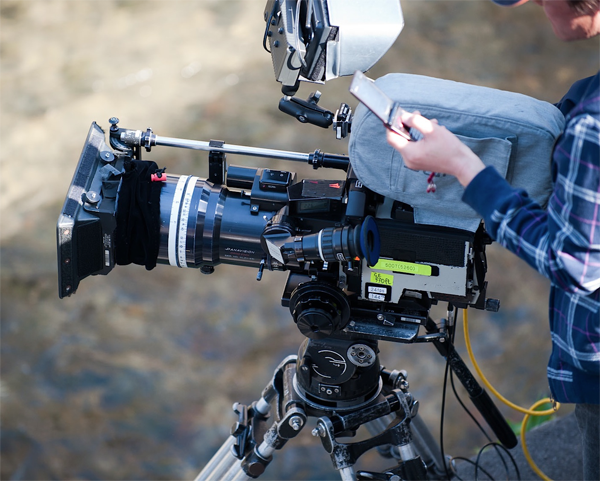Adapting Servo Zoom Lenses for Smooth-Zooming DSLR Production, Part 1
DSLRs have become the standard by which current and future large-sensor camcorders are judged. But as we adopted DSLRs and primes to produce more "filmic" video for our clients, we left something critical behind: the feathery smooth servo zoom that serves feature film producers so well. So how do you get that capability on your DSLR?
Motion picture cameras have long used zoom lenses for multiple reasons. Nearly every motion picture has a good budget for lighting so they're not desperate for f-stops of 0.95. Moreover, a typical f-stop of 4 or more is used because it gives the actor(s) and camera crews some leeway in hitting their mark. They can be off by a few inches and still keep the shot in focus. This reduces the number of takes, wastes less film, and moves the production schedule forward faster.
So super-fast prime lenses, while available, are not in as high a demand for big motion pictures as you may think. Another related factor is that having a zoom on the camera--even a short zoom--enables the camera crew to quickly/roughly place the camera and then use the zoom to make up the difference to get the exact framing the director wants.
Lastly, when properly motivated, zooming in and zooming out are incredibly powerful tools. Whether it be to create a dramatic Vertigo effect, or to slowly creep closer to the talent, or close in around them during the shot, or even to pull away and remove yourself from their situation, zooms come in handy in any number of shooting situations where there's an effect you need to achieve or a message to be conveyed.
Lots of situations we encounter in our everyday client work demand such a move: Your CEO reaches the most important part of his speech, the bride's father starts to tear up during his toast, or a scientific demonstration needs to be seen a little closer. At this point, you can gently roll that zoom rocker forward and push in to dramatic effect. You've given your video back the one feature it lost when you moved to DSLRs-I like to think of it as the posh push, merging the low-light luxuries of DSLRs with the feathery zooms of bigger cameras used in traditional filmmaking.

Motion picture lenses are typically zooms.
Enter DSLRs
Video-capable Digital Single Lens Reflex Cameras (DSLRs) provide a very "cinematic" shallow depth of field (DoF) to anyone who purchases a camera. Today's DSLRs (camera body-only) range from about $600 to well over $3,000. These cameras feature a sensor around the size of a 35mm motion picture film camera--usually about 6-10x the size of a prosumer camcorder sensor.
Camcorder users are accustomed to having nearly everything in focus. The DoF camcorders deliver is measured in feet, or tens of feet. It is hard to visually isolate an actor in front of a set or the talent in a commercial shoot with a typical small-sensor camcorder. A large-sensor camera collapses the DoF drastically, even down to an inch. With the Canon 5D's full-frame* (larger than 35mm film) sensor, you can make an image blur quickly and dramatically outside of the critical focus point.

A still frame from Philip Bloom's "Cherry Blossom Girl" shot on the Canon 5DmkII
* What photographers refer to as 35mm film is actually about 50% bigger than 35mm motion picture image area. The 35mm area for still photography is 36mm X 24mm, while 35mm for motion pictures is around 24mm X 18mm (depending on number of perfs, etc.).
Philip Bloom rode the wave of DSLR video and showed how DSLRs could be expertly wielded to demonstrate beautiful, clean video, and dramatic, shallow DoF. His enthusiasm spread like wildfire. Corporate and professionals snapped up DSLRs to adopt these new tools and get the new creative abilities. The lower-noise video in very low light dramatically reduced the need for big lighting setups. Now a couple of small LED lights provided more than enough illumination. Event videographers shooting in venues where they couldn't always control the lighting loved DSLRs for allowing them to get the shots they needed without using additional lights at all.
Then the camera began to move. First, using handheld stabilizers. Then the small "slider" market exploded. These sliders enable shooters to get rock-solid and very steady moves in any direction. Movements sideways, vertical, forward--even diagonal--are a breeze. When done well, these slider shots look every bit as good as a camera move in any motion picture film-without the need for an expensive dolly and a crew of grips.
All in all, the DSLR seemed like the perfect solution. The prices for DSLR-compatible prime lenses, and even old glass, rose steadily online, as a new wave of shooters began working with cameras that required a variety of new lenses for optimal use.
Related Articles
Adapting servo zoom ENG lenses to your DSLR rig with suitable rails and power makes for a smooth transition from prosumer camcorder to large-sensor video camera.